The Fighter Read online
Page 19
So complex is the resulting parliamentary situation, that a publication such as the Istituto Cattaneo’s is absolutely essential for any kind of overview of the constantly shifting alliances that lie behind Italy’s frequent if largely cosmetic changes of government. Between 1996, when, despite all his TV ownership, Berlusconi lost the general election, and 2001, when, despite a ban on party political TV commercials, he nevertheless won convincingly, there were five governments. In an attempt to overcome the inevitably weak executive that results from this state of affairs, the parliament set up a so-called Bicameral Commission to discuss major constitutional reforms. To read, in the Istituto Cattaneo’s round-up, the account of the interminable workings of this commission and its ultimate and complete failure is to have a sense of the meaninglessness of much of Berlusconi’s ‘just-let-me-get-on-with-the-job’ rhetoric, but also an awareness of the man’s growing capacities as a peculiarly Italian politician.
Again the author is Gianfranco Pasquino. Rapidly, he sketches in the positions of the main players. The president of the commission, DS secretary Massimo D’Alema, was eager to show his statesmanship by achieving a definitive solution to the Italian problem, but behind him he had a party and above all a coalition historically opposed to a strong executive. Berlusconi was looking for a presidential system which would allow him to be directly elected as head of state. However, before he would agree to anything, he wanted the judiciary reformed in a way that would allow him to escape the now endless investigations into his past. D’Alema might have been willing to grant such a reform in return for sensible constitutional change, but knew that his party would object. On the right, Gianfranco Fini, the leader of the National Alliance, was willing to sign almost any deal merely for the legitimacy that would be conferred on him by having been seen to be involved in it. Ironically, he was D’Alema’s staunchest ally. At the same time he couldn’t irritate Berlusconi, since it was Berlusconi who had given him legitimacy in the first place by accepting him into his coalition. Fini was frightened that D’Alema and Berlusconi might resort to the classic Italian arrangement of forming an amorphous central coalition that would forever exclude him.
Meantime, the half a dozen central parties, mainly fragments of the ex-Christian Democrats, together with two ‘green’ parties and the far left Rifondazione Communista, were working hard to avoid any solution that would endanger their continued existence. They did this by constantly threatening to pull out of the government coalition and thus end the legislature if the commission produced an unfavourable constitution. Naturally, as leader of the opposition, Berlusconi had a certain interest in encouraging them to do this. The League, on the other hand, still in a radically separatist phase, was only interested in demonstrating that the nation state was unworkable. Having walked out of the commission at the beginning, they staged a dramatic comeback to swing a crucial vote in favour of a directly elected president, something D’Alema hadn’t wanted and that the League itself had previously opposed. Seeing the work of the commission unexpectedly close to being concluded in the direction he wished, but without his having resolved his judicial problems, Berlusconi now claimed that the presidency envisaged did not have significant powers and so scuppered the whole process. Upon which D’Alema, after 480 hours of meetings, gave up in disgust. Pasquino comments: ‘the real contents [of the reforms] always remained of marginal concern for the majority of the commission’s members.’16
I mention this episode (of which I have omitted the half), chosen from amongst many others of equally Byzantine complexity all excellently covered in the Istituto Cattaneo’s reviews, to hint at what can and cannot be expected from any Italian government, whether its prime minister be Berlusconi or Prodi. Italy is a country where identity is largely structured around a person’s membership of various groupings (geographical, cultural, economic) that are fiercely if often only theatrically embattled with other groupings. ‘You exist only through your hate for us’17 writes a Verona football supporter, in local dialect, to traditional enemies Vicenza supporters on his club’s website message board. It might just as well be the unions talking to the employers, the north to the south, state workers to the self-employed, ex-communists to ex-Fascists. Except in moments of extreme crisis, no central authority or even common good is recognised.
The inevitable result is that even more than elsewhere the defining experience of any political career is frustration. Of whatever colour, however led, each government seems able to offer no more than another version of Italian immobility, which, after all, is but the downside of a social structure that still makes this country an extremely attractive place in which to live, and not quite like anywhere else.
Mad at the Medici
* * *
[Lorenzo de’ Medici]
WHEN DOES IT become justifiable to kill a political leader? Lorenzo de’ Medici, otherwise known as il Magnifico, was the acknowledged if unofficial ruler of the city state of Florence from 1469 until his death in 1492. He was no Hitler or Pol Pot. He could not be compared with his close ally, the debauched despot Galeazzo Maria Sforza, Duke of Milan, who was assassinated in 1476. If his expansionist policies threatened the small, independent towns around Florence, this was absolutely the norm for the time and no more than was expected of him. Lorenzo wrote fine poetry, maintained and built up the Medici family’s extraordinary art collection and was a brilliant conversationalist and diplomat. In April 1478 a rival Florentine family, the Pazzi, tried to assassinate Lorenzo and his younger brother Giuliano at Mass in the Florence Duomo. They got Giuliano but failed to kill Lorenzo and were themselves overwhelmed in the bloodbath of revenge that followed. History has given them a bad press. In his new book, April Blood: Florence and the Plot Against the Medici, the highly respected historian of the Italian Renaissance, Lauro Martines, sets out to find justifications for the Pazzi. Though he draws no analogies with modern or other times, the issue of political assassination is inevitably of enduring relevance.
Only twenty when he came to power, Lorenzo was the third Medici to dominate Florence. The regime began with his grandfather, Cosimo, in 1434 and thus had been going thirty-five years when his father, Piero, died of gout in 1469. On the December evening after Piero’s death about 700 citizens met in the convent of Sant’Antonio and agreed that the ‘reputation and greatness’1 of the Medici family must be preserved. ‘By which they mean’, explained the ambassador of Ferrara to his lord, ‘that the secret things of this government will pass through Lorenzo’s hands as before through his father’s.’2 It was about two years earlier that Marco Parenti, a quiet opponent of the Medici, had given up trying to write a history of the period because of ‘the difficulty of knowing the truth when those who govern keep things secret’.3 The Florentines, it seems, often used the expression ‘the secret things of our town’. Yet officially Florence was a republic with a written constitution dating back two centuries. What was it that had to be kept secret and why? To grasp the motivation behind the Pazzi attempt to eliminate the Medici, we have to look at a process that had been developing over many years.
The Florentine constitution worked, or was supposed to work, like this. The city was governed by a signoria comprising nine men, that is, eight priors led by a gonfaloniere della giustizia, a kind of first minister. However, each signoria served only for two months and its members were not elected by popular vote, but chosen by lot, their names being drawn from a series of bags prepared in such a way that there would be two priors from each quarter of the town, and that six of the eight would be from the more important guilds, in short the wealthier classes, and two from the minor guilds, the artisan class. A certain limited representativeness was thus guaranteed.
Aided by two consultative committees, the sixteen gonfalonieri and the twelve buonomini, the signoria initiated all legislation, but this then had to be ratified by two larger councils, the consiglio del popolo and the consiglio del comune, each comprising about 200 members and serving for four months. All these bodies a
nd many others too were, like the government, elected by drawing lots from various bags, each with its hundreds of name tags of men from different quarters and guilds.
The inspiration behind such a constitution should already be clear. Everybody – or everybody considered eligible – would serve in government for a brief period, but nobody would dominate. The system did not allow for the existence of the professional politician or the political party. Indeed, political association of any kind was forbidden and political gatherings, whether in private or public, were banned. Strictly speaking, in so far as it was not religious but political, the meeting of Medici supporters the night after Piero’s death was illegal.
What happened then when conflicting opinions led to impasse, when the government, for the most part elected from the patrician class, insisted on passing legislation that the two consigli with their wider representation insisted on rejecting? In a crisis, the signoria could summon a ‘parliament’. That is, a bell was rung, inviting the city’s entire adult male population to gather in the Piazza della Signoria in the heart of the town; a proposal was then read out, usually recommending the formation of a balia, a legislative body wielding unlimited powers for a limited period; the balia would then resolve the impasse, and since its members were selected by the signoria, it would obviously do so in their favour.
But what if the parliament voted against the signoria’s recommendations? Throughout the fifteenth century no parliament did so. For it was at the parliament that ‘the secret things of the town’ came briefly and brutally to the fore. The citizens arrived in the piazza to find it surrounded by armed men, often foreigners, always called there by the government of the day. A yes vote was guaranteed. Like many other republics and democracies before and since, fifteenth-century Florence was characterised by a fatal gap between rhetoric and reality: for ‘parliament’ read ‘coup d’état’.
At once utopian and repressive, the constitution sought to eliminate the natural tendency to form groups for political purposes in the pessimistic belief that no group would ever act on behalf of the whole town, but would always be self-interested and family-based. Indeed, there is an obvious correlation between the republic’s institution of a special police force – the ‘agents of the night’ – to pursue homosexuals, or young women who broke regulations on public modesty by wearing platform shoes perhaps, or too many buttons, and its determination to stamp out political parties. This was a radically Christian society where everything was seen in terms of good and evil and the only respectable answer to evil was to repress, never accommodate. All the same, it proved hard to recruit the ‘agents of the night’ from Florence itself, and this for the simple reason that in a fairly small town of 45,000 people no one wanted to become unpopular for harassing acquaintances. Evil or not, homosexuals abounded, girls were fatally attracted to anything that might enhance their charms and political factions thrived, indeed they ran the show. In its very idealism, the constitution was ill-equipped to deal with reality.
Thus in the early decades of the century, the two-monthly governments were largely guided in their decisions by the Albizzi family and their clients and friends. In the early 1430s the faction’s dominance was threatened by the rapidly accumulating wealth of the Medici bank and in particular Cosimo de’ Medici’s use of that wealth to acquire friends in every area of society. Big money has a way of seeking to buy what cannot or should not be bought, be it a place in heaven or power in government. Cosimo wanted both and was charming and generous to boot. At the same time the lively interest of humanist scholars in the history of the classical world was turning up a wealth of political figures who had been great leaders without the benefit of royal blood. A heady procession of new role models was becoming available to men like Cosimo, models for which the Florentine constitution was quite unsuited.
Military defeat and drastic tax hikes put the Albizzi faction on the defensive and precipitated a crisis. But since the city was not officially ruled by faction there was no legal way for power to be transferred from one group to another. ‘Every case that came before the magistrates, even the least, was reduced to a contest between the parties’4 Machiavelli tells us in his Florentine Histories, though supposedly no parties existed. Finally, Rinaldo Albizzi persuaded a favourable signoria to call a parliament, create a balia, accuse Cosimo of treason and have him and his allies exiled. A year later, though, with Albizzi fortunes at a new low, the luck of the draw turned up a signoria favourable to Cosimo. He was recalled and promptly had all his enemies exiled.
This see-sawing of political fortunes dependent on the selection of government by lot had an element of farce about it, grim farce for those on the losing side. Understandably, Cosimo set about making sure that he would not have to leave Florence again. Over the next thirty years, through a series of cautious experiments and ad hoc electoral measures he sought to subvert the republic in such a way that the electoral bags would never again throw up a signoria opposed to his interests. On the other hand, he never actually abolished the business of choosing the names of government members from electoral bags, nor ever sought to become the city’s official prince or dictator. In a fragmented Italy where, centuries before other Western nations, the idea of a divine right of kings had ceased to carry conviction, Cosimo’s modernity lay in his understanding that to hold power for any length of time one must appear not to hold it; or rather, all power must now seem to have the new legitimacy of popular consensus. It had become important for the Florentines, as it is important for us today, to imagine that they were equals in a process of collective self-government. Cosimo would do everything he could to preserve that illusion. His reforms concentrated on the electoral lists that decided which names would be put in which bags for which appointments, and then in exploiting moments of military or economic crisis to claim special powers that allowed a small group of bureaucrats to select just a very few names (rather than hundreds) to be put in the bags. Meantime the city’s registers went on recording what was now a charade of a lottery as if nothing had changed.
Inevitably, there was popular resistance to this and new, often bewilderingly complicated tricks had to be invented with a certain frequency. In one debate among members of the regime over whether they must give way to popular pressure and return to the real lottery system, Cosimo agreed that the concession seemed inevitable but was at a loss to understand how it might best be done while preserving the regime. In any event, he warned, ‘the greatest attention must be paid to the technical aspects.’5 Whenever, in a democracy, we see our nervous rulers obsessed with ‘the technical aspects’ of the electoral process, then we know we are getting close to the ‘secret things of our town’.
Because of the extent of Medici power in the mid-fifteenth century, as the family bank reached its moment of maximum extension and Cosimo the height of his considerable manipulative powers, it has been suggested that the citizen of Florence was in much the same position as the subject of the surrounding principalities. This was not the case. Equally powerless, the Florentine was nevertheless mocked, or flattered, by the rhetoric of freedom and legality. He could not bow before his monarch in dignified fashion, saying: this is God’s will; nor, alternatively, tell himself: this man is a usurper and I only bow down because brute force obliges me to. The regular electoral process, the continuing existence of the consiglio del popolo and the consiglio del comune, fired the Florentine imagination with ideals of political freedom which remained forever frustrated. Hence a very special state of mind developed: a fizz of excited and idealistic political thought frothed over the intransigent reality of protracted if veiled dictatorship. This state of mind, the exhilaration and humiliation of the fake democracy, at once so relevant to the modern world and so difficult to pin down, is the real subject of April Blood and the key to understanding the Pazzi conspiracy.
Between Cosimo’s return to Florence in 1434 and his great-grandson, Piero di Lorenzo’s, flight from the city in 1494 there were three serious challenges to the Me
dici regime, each ending in a parliament, the appointment of a balia with unlimited powers, and a new turn of the screw. In 1458 a challenge was launched through legal institutions in line with the constitution. The regime survived, but at the high price of showing itself for what it was. Troops from Milan were marched into town for a parliament. The gloves were off.
In 1466, two years after Cosimo’s death, the opposition came from key members of his regime now determined to take the state from his ailing son, the gout-paralysed Piero. In so far as they used the institutions against Piero, they did so by manipulating them in much the same way they had manipulated them on behalf of his father. It is hard to gauge how much seriousness to ascribe to each man’s claim that he was acting for freedom and republicanism. Perhaps all they wanted was to set up the electoral bags to guarantee a patrician oligarchy, since the older Florentine families had always loathed the Medici habit of bringing in ‘vile new men’ who would be loyal to the ruling family in return. In any event, this crisis ended with both sides appealing to foreign powers for military aid, but whereas the opposition was divided and uncertain over the use of force, the bedridden Piero was surprisingly determined and efficient. The Medici won the day, the ‘conspirators’ were exiled.
These two failures serve to explain why, in launching the third challenge to Medici power in 1478, the Pazzi family made no attempt at all to work through public institutions. There was no point. With the Medici bank now in drastic decline, perhaps due to a general downturn in trade, perhaps to Lorenzo’s incompetence in this sphere, the Medici were no longer in a position to buy support with a constant flow of gifts and so had actually tightened their stranglehold on the electoral machinery as the only way of staying in power. The point had now been reached where, in a simulacrum of legality bolstered by constant propaganda, a group of Medici initiates voted each other onto all the legislative bodies turn and turn about without any threat of interference. You could join the group, but only if you offered unconditional support to the still young and arrogant Lorenzo, who was behaving more and more like a hereditary prince.

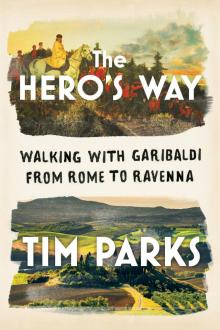 The Hero's Way
The Hero's Way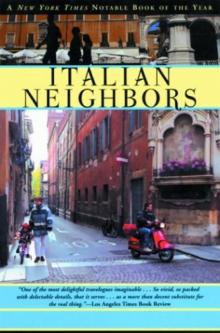 Italian Neighbors
Italian Neighbors Goodness
Goodness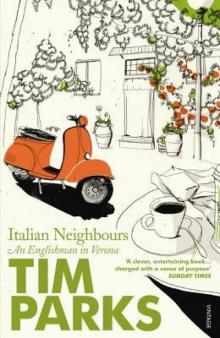 Italian Neighbours_An Englishman in Verona
Italian Neighbours_An Englishman in Verona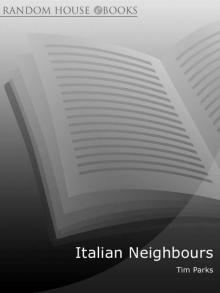 Italian Neighbours
Italian Neighbours Juggling the Stars
Juggling the Stars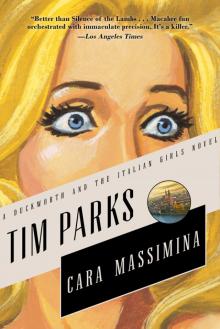 Cara Massimina
Cara Massimina Cleaver
Cleaver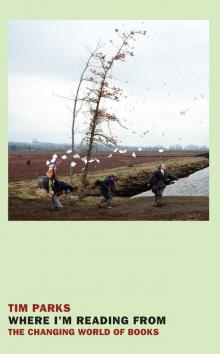 Where I'm Reading From
Where I'm Reading From Dreams of Rivers and Seas
Dreams of Rivers and Seas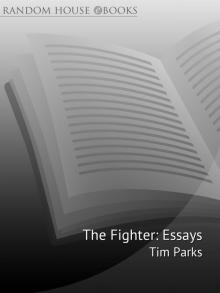 The Fighter
The Fighter In Extremis
In Extremis Painting Death
Painting Death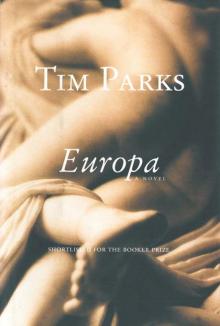 Europa
Europa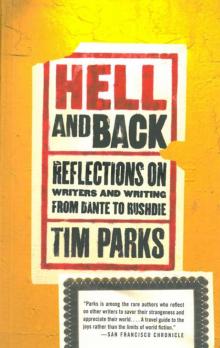 Hell and Back
Hell and Back Judge Savage
Judge Savage Thomas and Mary
Thomas and Mary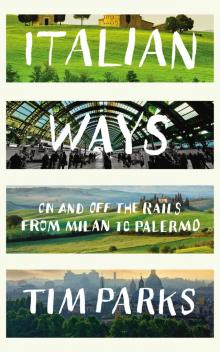 Italian Ways
Italian Ways Rapids
Rapids Mimi's Ghost
Mimi's Ghost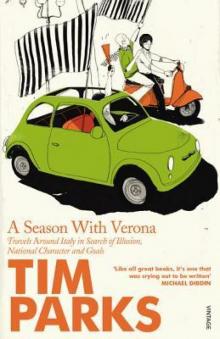 A Season With Verona
A Season With Verona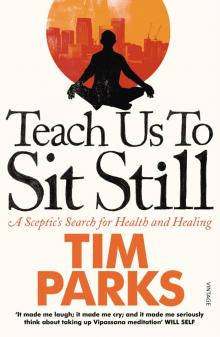 Teach Us to Sit Still
Teach Us to Sit Still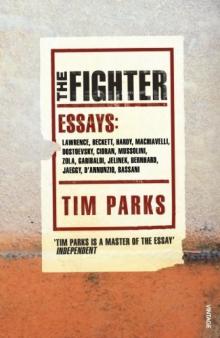 The Fighter_Literary Essays
The Fighter_Literary Essays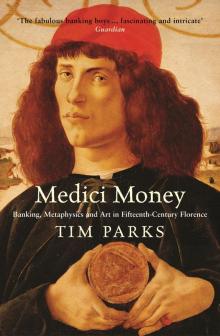 Medici Money
Medici Money